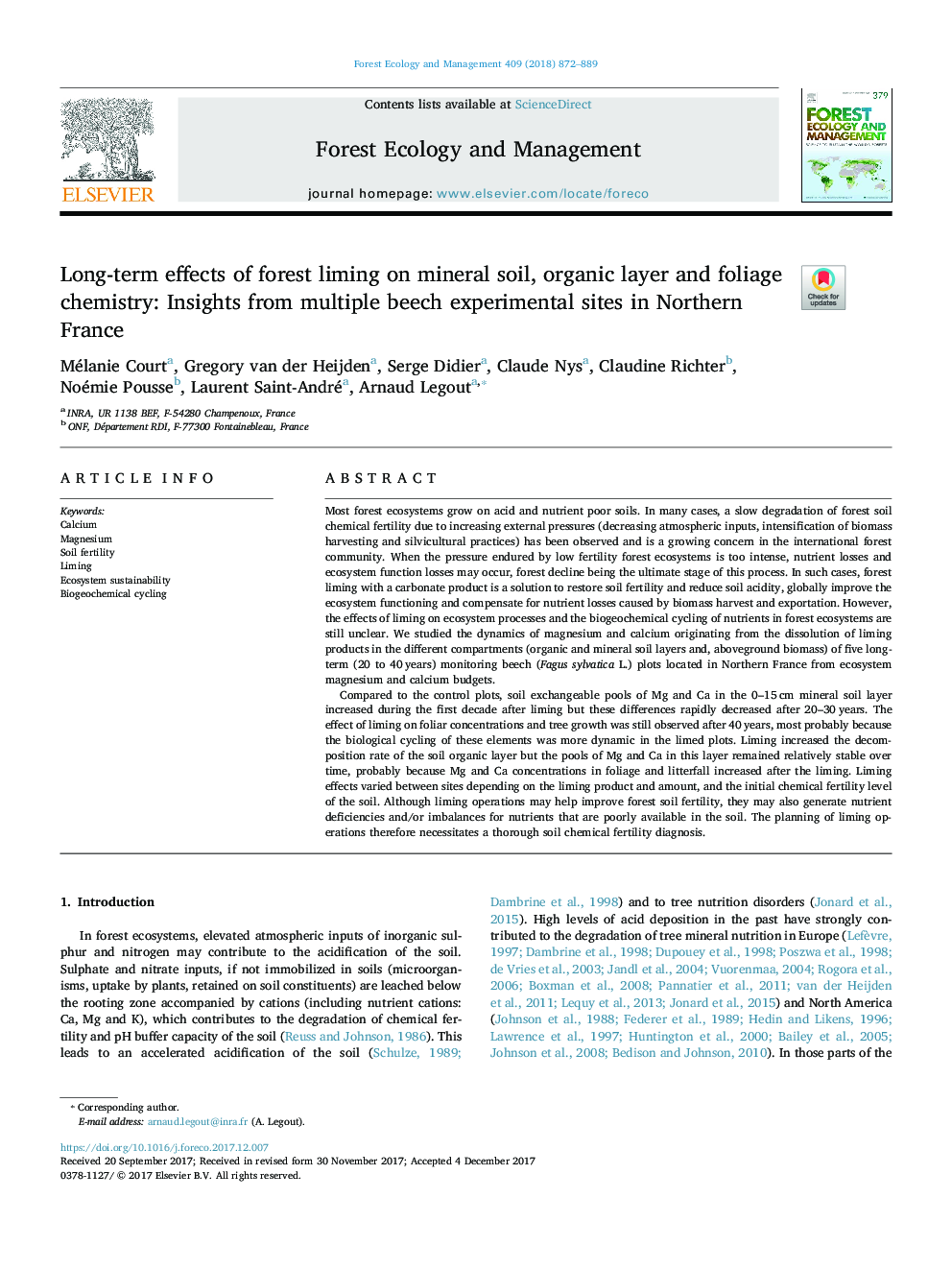| Article ID | Journal | Published Year | Pages | File Type |
|---|---|---|---|---|
| 6541997 | Forest Ecology and Management | 2018 | 18 Pages |
Abstract
Compared to the control plots, soil exchangeable pools of Mg and Ca in the 0-15â¯cm mineral soil layer increased during the first decade after liming but these differences rapidly decreased after 20-30â¯years. The effect of liming on foliar concentrations and tree growth was still observed after 40â¯years, most probably because the biological cycling of these elements was more dynamic in the limed plots. Liming increased the decomposition rate of the soil organic layer but the pools of Mg and Ca in this layer remained relatively stable over time, probably because Mg and Ca concentrations in foliage and litterfall increased after the liming. Liming effects varied between sites depending on the liming product and amount, and the initial chemical fertility level of the soil. Although liming operations may help improve forest soil fertility, they may also generate nutrient deficiencies and/or imbalances for nutrients that are poorly available in the soil. The planning of liming operations therefore necessitates a thorough soil chemical fertility diagnosis.
Related Topics
Life Sciences
Agricultural and Biological Sciences
Ecology, Evolution, Behavior and Systematics
Authors
Mélanie Court, Gregory van der Heijden, Serge Didier, Claude Nys, Claudine Richter, Noémie Pousse, Laurent Saint-André, Arnaud Legout,
